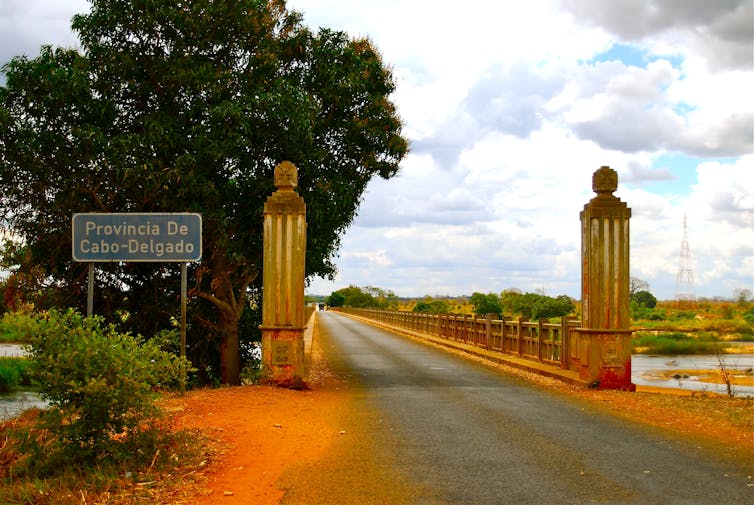
Eric Morier-Genoud, Queen’s University Belfast
Mozambique’s northern Cabo Delgado province has been held hostage by insurgents for nearly 17 months. Armed attacks, decapitations and the destruction of property have become common. Many are worried that the violence may escalate and destabilise the country’s economy further.
One of the biggest problems is that nobody really knows who the insurgents are. They don’t make public statements, so their motives are unclear.
Speculation and conspiracy theories abound. Many, including state officials and the new president of the Renamo opposition party, believe the insurgency is part of a struggle within the national elite for the control of Cabo Delgado’s oil, gas and mineral riches.
The government offers few – and contradictory – explanations. It has said both that the violence is committed by local unemployed “criminals”, and that the attacks are the result of global jihadism trying to move into Mozambique.
Lack of information and clashing explanations have led to confusion as to what’s happening in Northern Mozambique and what should be done to reverse the situation.
Roots of insurgency
The local population calls the group behind the attacks “al-Shabaab”. This means “youth” in Arabic and refers, of course, to the global terror group in Somalia (though the Mozambican insurgents have no formal links to them). In Mozambique, the group’s origins go back to the 2000s, when some young men within the Islamic Council of Mozambique began to develop a new reading and practice of Islam.
In Cabo Delgado, they created a sub-organisation within the Islamic Council called “Ansaru-Sunna” which registered legally with the state. It built new mosques and preached a stricter form of Islam across the province. Soon, a more radical and activist group formed within this sub-organisation and split off as a sect – what has become known locally as “al-Shabaab”.
This group initially concerned itself with religious debates, practice and opposition to the secular state. In 2010 the villagers of Nhacole in the Balama district decided to get rid of the group and destroyed its mosque. Sect members fled to the town of Mucojo, in the district of Macomia. There tensions flared with the local population and authorities.
The police had to intervene twice in Mucojo. In 2015 they were called in because the sect tried to forcefully impose a ban of alcohol in the town. Death and injuries ensued when a sect member fatally stabbed a policeman.
Resort to arms
Mainstream Muslim organisations and individuals, among them the Islamic Council from which the “al-Shabaab” sect split off, were disquieted by the group’s actions. They repeatedly asked the government to intervene.
In late 2016, the government finally acceded to their request and began to arrest and bring some group leaders to court across the province. The men were accused of engaging in disinformation, rejecting state authority, refusing to send their children to school, and using knives to protect themselves.
It’s not clear when the “al-Shabaab” members began to train militarily, but the state’s actions against their leaders seem to have been the tipping point towards their passing to armed action. Their first attack was in October 2017 in the town of Mocímboa da Praia and surrounding communities.
Since then, sect members have taken to the bush from where they attack isolated villages. The number of attacks and their brutality increased steadily in 2018. The insurgency seems to have become more organised. Its attacks and activities have focused on a coastal band about 150kms wide, from the provincial capital of Pemba to the Tanzanian border.
Seeds of discontent
It is clear, then, that the insurgency has built on some local social, religious and political tensions. Cabo Delgado is Mozambique’s poorest province; unemployment is high, particularly among the youth. It’s also largely rural. Government services are not reliable.
Major recent oil and gas discoveries in the area have generated many expectations, but communities have seen very few, if any, benefits, particularly in rural areas.
In addition, the fact that Muslims feel particularly marginalised in Cabo Delgado, where their ethnic neighbours have had privileged access to national political power since independence, helps explain how an anti-state Islamist discourse may have gained traction.
Another aspect is the group’s international connections. Much has been said about links to Somalia, Democratic Republic of Congo and Uganda. But most connections are with Tanzania.
Mozambican Islamic clerics have trained in Tanzania for more than a century and exchanges have taken place for longer, among religious communities on both sides of the border. So it’s unsurprising that the Mozambican “al-Shabaab” connected with like-minded Muslims in Tanzania in the 2010s.
After Tanzanian radicals became violent and the state responded forcefully against them after 2015, and particularly strongly in early 2017, some of them took refuge with the Mozambican “al-Shabaab”. This has reinforced and partially internationalised the insurgency.
Seeking solutions
Since the “al-Shabaab” in Mozambique is not the result of an internal or external conspiracy, the state needs to focus on the social, religious and political dynamics at play to control and combat the insurgency.
While the Mozambican army has managed successfully to contain the geographical spread of the armed sect, the government needs to focus with equal force on redressing the local grievances which the insurgents are tapping into.
Mozambican scholar Yussuf Adam has put forward an interesting idea to start addressing these grievances. He argues that the state should hold district “general estate assemblies” to identify issues, and to design solutions from the bottom up.
Eric Morier-Genoud, Senior Lecturer in African history, Queen’s University Belfast
This article is republished from The Conversation under a Creative Commons license. Read the original article.
